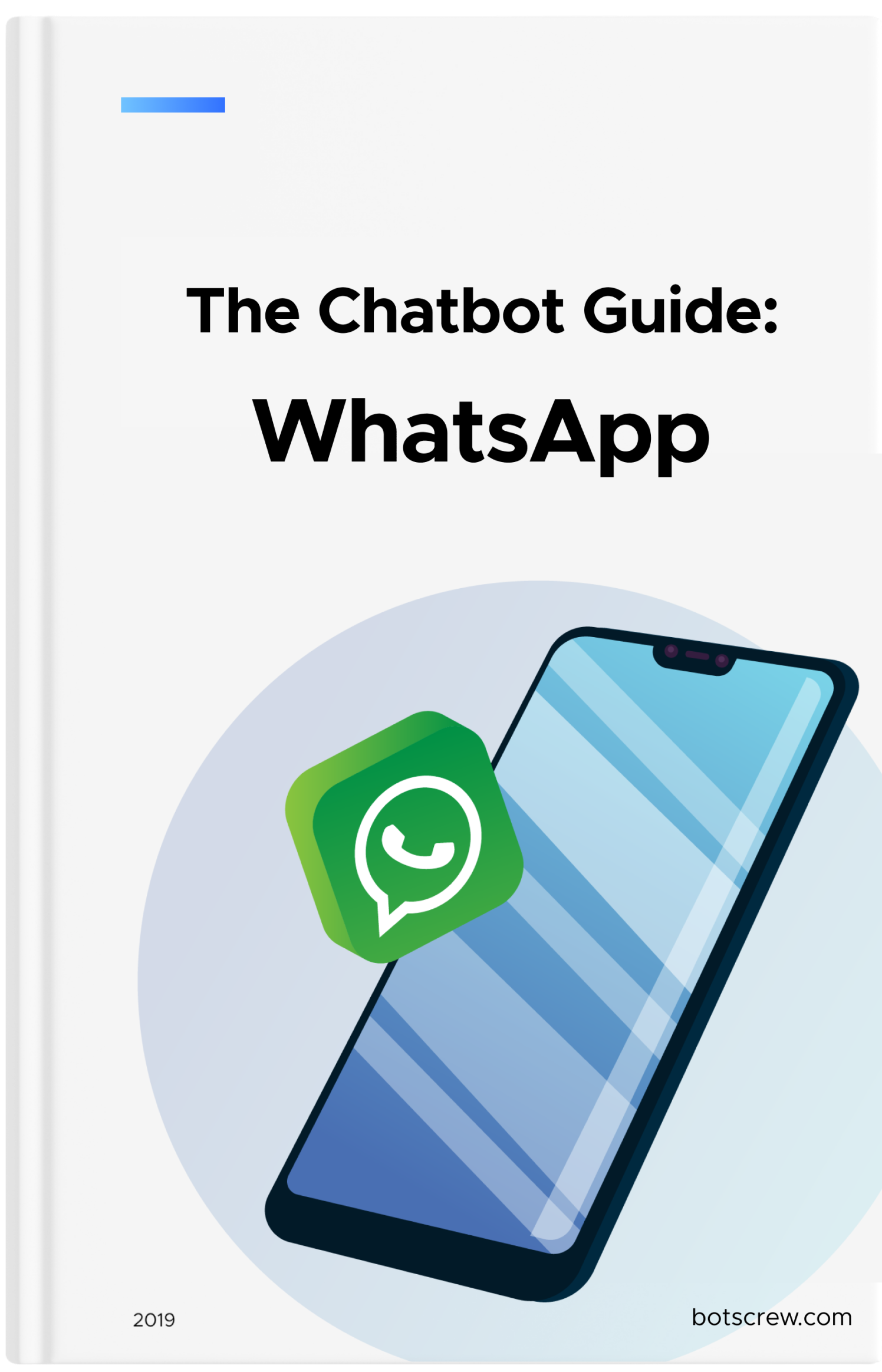5 Must-Have Patient Engagement Strategies in 2025
What is patient engagement? What is the difference between an engaged patient and an activated patient? And what are the must-have patient engagement strategies for 2023? We cover all of these questions and more in this article.

- What is patient engagement?
- What is patient activation?
- Why is patient engagement important?
- Patient Engagement Strategies
- Engage with your patients before, during, and after their visit
- Personalize your interactions
- Use human language to explain complex information
- Automate patient engagement
- Use preferred channels
Subscribe to bi-weekly issues of 👎👍 Bad to Great Chatbot
A 200-word email with insights from people who made great chatbots before
Join 1000+ other business leaders who build successful chatbots. You’ll be the first to know when we publish anything new.
Patient engagement is crucial to good patient experience, high patient satisfaction scores, and, most importantly, positive health outcomes.
of physicians say patient engagement is a top priority in their organization.
Engaged patients invest more time and energy into their health, leading to better results and helping medical institutions save costs and resources. So, in this article, we wanted to look at the most essential patient engagement strategies you should be using right now.
What is Patient Engagement?
Patient engagement is the desire and capability to actively participate in care in cooperation with a healthcare provider or institution to maximize outcomes or improve experiences of care. Or simply put, patient engagement is when patients actively gather information and make decisions about their health.
What is Patient Activation?
Patient activation is defined as a patient’s knowledge, skills, ability, and willingness to manage their health and care.

So, patient engagement and activation are two related terms. For patients to become activated, you need to engage them in taking an active part in their care.
Why Is Patient Engagement Important?
An engaged patient takes the actions necessary to improve and manage their health.
Engaged patients are more likely to do regular health checkups, vaccinations, cancer and STD screenings, etc. They are more likely to eat healthy diets, exercise regularly, and avoid risky behaviors like smoking, using drugs, and drinking excessively. An engaged patient is more likely to identify a disease or diagnosis early.
Less engaged patients are 3x more likely to have unmet medical needs. They are also 2x as likely to delay getting care, compared to patients who like to actively participate in their treatment. Adracare
So, patient engagement is vital because it results in better health outcomes for the patient.
Also, it helps to cut operational costs for healthcare organizations by reducing the number of re-admissions or patient no-shows, requiring less medical time and resources.
Patient Engagement Strategies
1. Engage with your patients before, during, and after their visit
Engaging your patients at every stage of their care journey is crucial. One of your patient engagement strategies should be to educate patients before they come to you, guide them while they are on their healthcare journey, and don’t forget to support them throughout aftercare.
Before your patients start their care journey, you need to inform, educate, and clarify misconceptions for them. This will help them make better medical decisions, be more confident with their treatment plan, trust their doctor more and, most importantly, save valuable time later for both HCP and the patient.
“Patient education has been demonstrated to significantly improve compliance with medication across a broad range of conditions and disease severities. In a study in which patients received educational materials, referral for bone densitometry, and physician consultation, 67% were compliant with treatment after 6 months.” American Journal of Medicine
During your patient’s healthcare journey, you need to engage them by providing additional information and recommendations and answering their questions. It’s also good to include your patients in the shared decision-making process. This means you engage your patients in choosing a specific treatment plan and put them in the middle of their care. In this context, introducing top-rated meal kits can help patients who struggle with meal planning to maintain a balanced diet effortlessly. Integrating such practical and accessible resources becomes another layer of patient support. By doing so, patients may become more active in their care management and wellness goals.
For patients aiming to maintain a balanced diet more easily, considering various cost-effective options is integral. Using meal delivery services that provide nutritious and convenient meal solutions aligns perfectly with health management goals. Leveraging meal delivery discounts can make these services budget-friendly, ensuring sustained healthy eating habits without the financial burden.
For patients to make the right decisions, you need to increase their knowledge about the diagnosis, risk factors, consequences, treatments, and prognosis. Also, patients must understand the importance of each step that must be taken during their treatment —including lifestyle changes and medication management.
And also, don’t forget about your patients after their discharge. Your patients require support, guidance, and attention even when they leave your office.
“There are times when more than 40% of patients misunderstand, ignore, or choose not to follow aftercare instructions. When aftercare instructions are complex or require major lifestyle changes, nonadherence can be as high as 70%. Nonadherence to aftercare instructions can lead to poor health outcomes, readmittance, and even death. It’s estimated that as many as 125,000 deaths yearly are due to nonadherence complications.” Patient Bond
Patient engagement during aftercare increases commitment to aftercare instructions. Also, it helps to build trust and understanding by showing that you care about your patients even when they are not admitted and under your care.
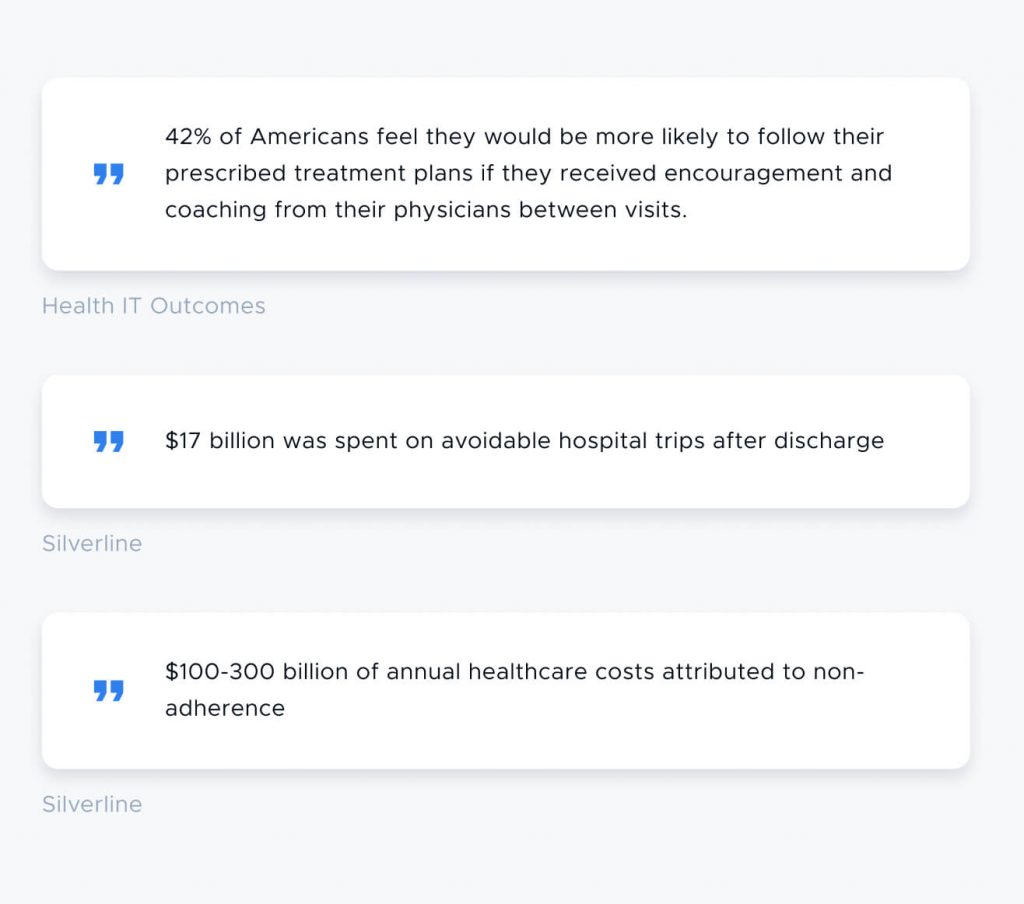
Aftercare patient engagement strategy can include:
- Medication, procedures, check-ups, vaccination, and test reminders
- Symptom and mood trackers
- Recommendations on healthy diets, exercises, mental health tips, etc
- Simple check-ins to see how the patient is doing
- Sharing useful medical materials, studies, information
A good example of the after-care engagement tool is Florence. Florence is a chatbot operating on Facebook, Skype, and Kik. Her main mission is to support individuals by monitoring any chosen mental health & wellness indicator (such as weight loss, pain level, or period cycle) as well as to assist them with adherence, education, and motivation regarding their medication, vitamins or birth control pill regimens.
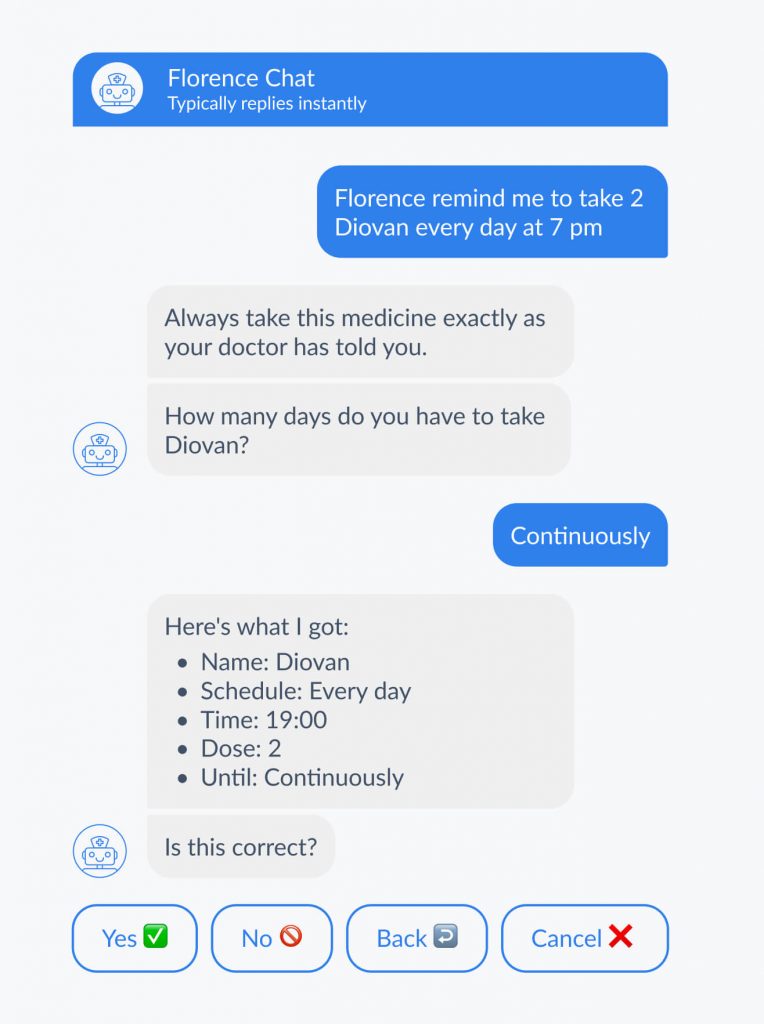
2. Personalize your interactions
The first and most important patient engagement strategy is to segment your patients.
You can segment patients based on age, gender, location, medical history, diagnosis, medical insurance, etc. Using segmentation, you can create customized engagement strategies and messages that speak directly to each patient segment.
For example, if you want to send your patients a pamphlet about the importance of mammography to catch cancer in its early stages, it’s better to target it at the women's segment of your patients.
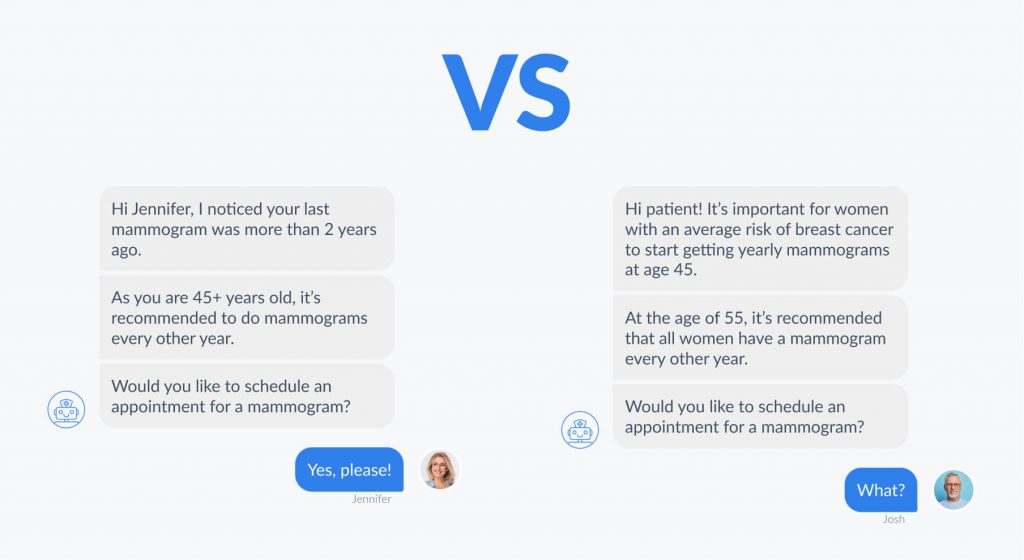
Or another example, if there is a new study about the importance of a healthy diet for people with diabetes, you’d want to share it with people who actually have it. This way, your message is more meaningful and relevant to the patient and can help improve engagement rates.
3. Use human language to explain complex information
Using complex language negatively affects patient engagement because it creates a barrier between the doctor and the patient. Clear communication is vital for patients to be engaged and active in their treatment. Clear language and avoiding vague or overly technical jargon will help your patients digest complex medical information. A study published in Health Literacy Research and Practice found that sometimes patients neither understand medical terminology nor recognize the gaps in their comprehension.
“Too often, our healthcare environments fail to recognize the needs of people with different levels of understanding about their health, meaning that patients are failing to receive the right care at the right time.”
The simple solution is communicating clearly and avoiding jargon and complex medical terms. When explaining medical information, try to be as clear as possible and always ask patients to explain the information back to you.
Our client Natera used a chatbot to provide complex information about genetic test results simply and clearly. The chatbot takes complex medical terms and explains them understandably and humanly. It also offers additional information for patients to learn more and allows patients to ask questions they might have. Read more here: NEVA. Genetic Testing Chatbot for Natera Inc.
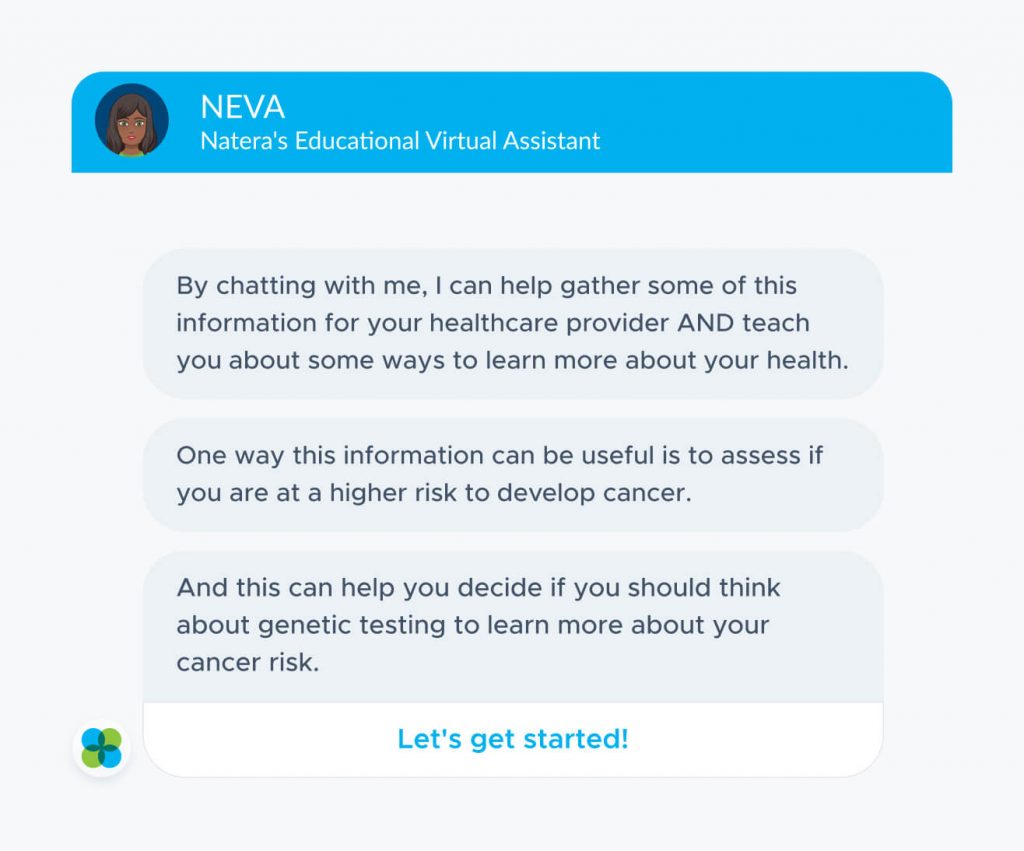
Wondering about Healthcare chatbots and what they can do for you? Visit our new Healthcare page and learn more about them or book a free consultation with our chatbot expert!
4. Automate patient engagement
Creating meaningful and relevant engagement for even one patient is very time-consuming.
You will eventually need to look at automation options to reach as many patients as possible. Automated patient engagement strategies can be very effective and help you stay connected with your patients at scale. In addition, they hugely benefit your staff by taking routine tasks off their shoulders, resulting in less burnout and staff shortages and eventually in lower operational costs.
Some people are afraid that they might become inhuman when using automated systems. But the key here is balance. You don’t want to replace all of your interactions with automated systems. You just need to apply them where it makes sense.
For example, let’s look at chatbots.
Chatbots are one of the most popular automation tools nowadays, and their possibilities in healthcare are limitless. The most common use cases in using chatbots in healthcare are:
- Triaging patients for clinical trials or before they visit a clinic
- Educating patients about procedures and tests
- Helping patients with chronic diseases to manage their conditions by providing relevant recommendations
- Assisting patients in scheduling visits to the clinic or setting appointments for procedures/tests. Also, sending reminders about these appointments, regular checkups, procedures, and treatment they need to take
- Explaining to patients test results and their next steps
- Answering questions about billing, medical insurance, coverage, etc
- Collecting their feedback after the clinic visit
- Providing additional education about the patient's condition, remedies, and ways to cope with the disease by sharing helpful materials and tips
And there is so much more chatbots can do for healthcare. All of the use cases mentioned above help patients be more engaged in their care and help HCP save time and costs. Additionally, using a free QR code generator can further simplify patient interactions by providing easy access to health resources, appointment bookings, or medication instructions through scannable QR codes, enhancing overall engagement.
"The total cost of missed healthcare appointments in the United States every year is an astronomical $150 billion. Each open, unused time slot costs a physician 60 minutes and $200 on average." MTAC
5. Use Preferred Channels
Using the patient engagement strategy #1 - Segment your patient, segment your patients based on their preferred communication channel. For example, for an elderly segment of your patients, the most comfortable communication channel might be via business phone, and for your younger patient segment, WhatsApp or email might work better. You need to understand where your patients would be most comfortable communicating with you and then provide support and education on these channels.
of consumers are more likely to select a provider who allows them to conduct healthcare interactions online, on a mobile device, or at a self-service kiosk.
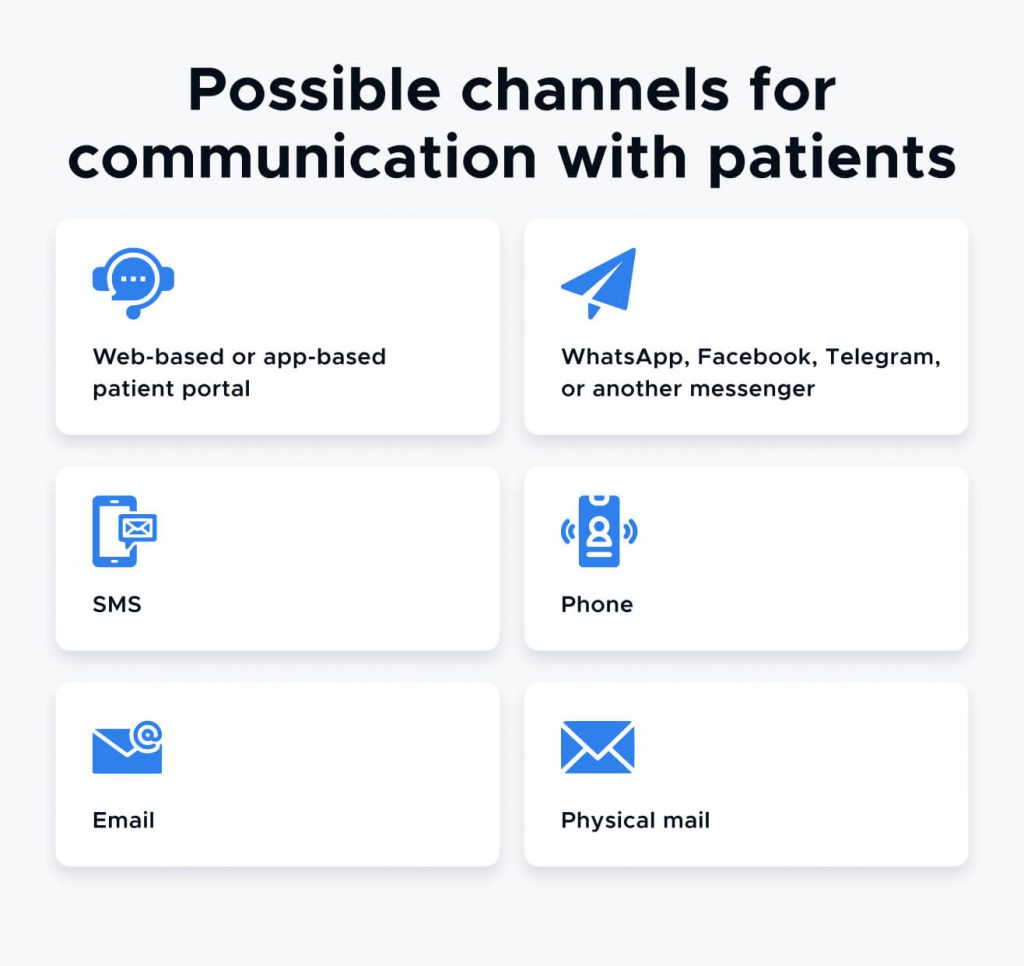
Using their preferred communication channels you significantly increase the chance of successful interaction and engagement. So, choose the right channel.
Interested in Healthcare chatbots? Visit our new Healthcare page to learn more.




